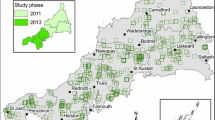Abstract
Many states within the United States as well as many other countries have promulgated regulations addressing public health, consumer protection, and truthin-labeling aspects of the extraction, bottling, and labeling of commercially bottled springwater intended for public consumption. Many of these regulations are inconsistent, suggesting a need for more uniform standards in acceptable extraction methods and legal/technical definitions of “spring” and “springwater.” An objective of the extraction or collection method is protecting the quality and integrity of the springwater, especially against microbial contamination. A summary of microbiological issues associated with groundwater and springwater is presented. Acceptable extraction methods can be either surface collection boxes/houses at the discharge point of the spring or a subsurface borehole or gallery interception system. Although extraction wells can provide total protective isolation of the water, a potential concern with that method is providing assurance that the extracted water is in fact the same water that feeds the adjacent spring. Criteria for testing this requirement are suggested in the paper.
Similar content being viewed by others
References
American Geological Institute (1960) Glossary of geology and related sciences, 2nd ed. Washington, D.C.: National Academy of Sciences, National Research Council. p 277
American Geological Institute (1976) Dictionary of Geological Terms, rev. ed. Garden City, NY: Anchor Press/Doubleday. p 404
AFDO (Association of Food and Drug Offcial) (1986) Model Bottled Water Regulation. Washington, D.C.: AFDO
Back W and Landa ER (1992) Ingesting the consequences of waterrock interaction: Historical notes on bottled water and spas. Proceedings of water-interaction-7 symposium, Park City, Utah, 13–22 July 1922, sponsored by International Association of Geochemistry and Cosmochemistry (preprint)
Blake PA, Rosenberg ML, Florencia J, Costa JB, Do Prado Quintino L and Gargarosa EG (1977) Transmission by bottled mineral water. Am J Epidemiol 105:344–348
Edberg SC (1992) Health effects of microbes isolated from drinking water. In: Gilbert CE and Calabres EJ (Eds), Regulating drinking water quality. Boca Raton, FL: Lemis Publ. 340 pp
Hem JD (1989) Study and interpretation of the chemical characteristics of natural water. US Geol Survey Water Supply Paper 2254, p36
IBWA (International Bottled Water Association) (1991) International bottled Water Association Model Bottled Water Regulation. Alexandria, VA: IBWA, 11 pp
Meinzer OE (1923) Outline of ground water hydrology, with definitions. US Geol Survey Water Supply Paper 494, p 54
Morbidity and Mortality Weekly Report (1985) Milk-borneSalmonella in Illinois. 34:215–216, 2483
Author information
Authors and Affiliations
Rights and permissions
About this article
Cite this article
Robertson, J.B., Edberg, S.C. Technical considerations in extracting and regulating springwater for public consumption. Geo 22, 52–59 (1993). https://doi.org/10.1007/BF00775285
Received:
Accepted:
Issue Date:
DOI: https://doi.org/10.1007/BF00775285




